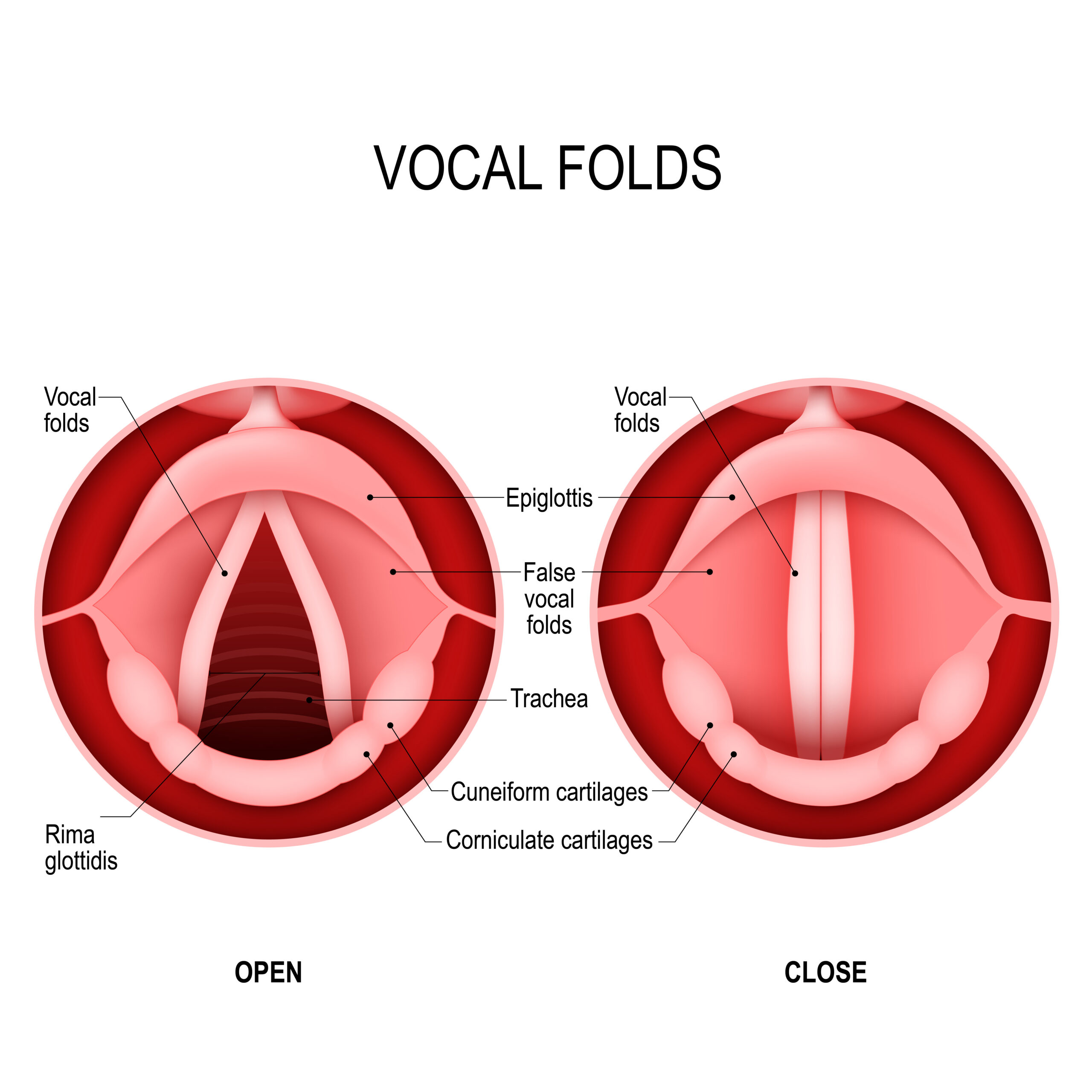The Length Of The Vocal Folds Affects The Pitch
True vocal folds are shorter and thicker at low pitches, and longer at high pitches. If we want to sing a higher pitch, the vocal folds need to elongate.
The vibratory frequency of middle c is 261,6 Hz, which means that to be able to sing that particular pitch the true vocal folds need to vibrate 261,6 times per one second. When we sing an octave higher, the vibratory frequency doubles: now the true vocal folds need to be able to vibrate 523,3 times during one second.
The true vocal folds vibrate slower on low pitches, and faster on high pitches.
The Air Flow Changes With The Pitch
The higher we sing, the faster the vibration of the vocal folds is. What does this mean in terms of breathing? The air flow needs to be able to rapidly adjust to changing pitches when we sing, as higher pitches often require less breath, depending on the singing style we use.
The Larynx Moves With The Pitch
The larynx needs to be free to move up and down when singing different pitches. The larynx rises when singing higher and lowers when singing lower. The tongue affects the movement of the larynx.







7 thoughts on “How Are Different Pitches Produced?”